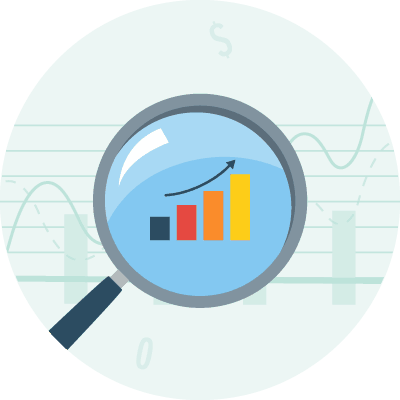What Is the House Price Index (HPI)?
REtipster does not provide tax, investment, or financial advice. Always seek the help of a licensed financial professional before taking action.
Shortcuts
- The Housing Price Index (HPI) is a broad measure of the changes in price levels and trends of single-family homes in the United States over a given period. The Federal Housing Finance Agency (FHFA) publishes the HPI monthly and quarterly.
- The HPI analyzes data from the Federal National Mortgage Association (Fannie Mae) and the Federal Home Loan Mortgage Corporation (Freddie Mac) to determine housing prices nationwide.
- The HPI is an important economic indicator. It provides insight into the overall quality of living and the inflationary and deflationary trends in an economy.
What Does the HPI Indicate?
The HPI indicates home pricing trends by monitoring the changes in the average prices of properties when they are being refinanced or resold.
As an economic indicator, the HPI provides invaluable insight into real estate market conditions across a particular geographic location. By measuring how single-family house prices change over a given period, stakeholders can get a snapshot of the market, especially regarding which areas are experiencing rising and dropping housing prices. These stakeholders include mortgage borrowers, lenders, real estate investors, and government agencies.
The Federal Housing Finance Agency (FHFA)[2] calculates and publishes the HPI in the United States. This government agency specializes in tracking changes in home prices across the country. The data published in the HPI is not only useful at the country and state levels but also to specific regions and cities.
The federal government has used the HPI to gauge pricing trends of single-family homes since the 1970s.
HPI Data Sources
The Federal National Mortgage Association (also known as Fannie Mae) and the Federal Home Loan Mortgage Corporation (or Freddie Mac)[1] supply the raw data used in HPI calculations.
Fannie Mae and Freddie Mac operate under a congressional charter as government-sponsored enterprises facilitating mortgage financing. They essentially make affordable housing accessible by purchasing and securing mortgages.

Fannie Mae’s former headquarters at in Washington, D.C. Source: Wikipedia
These companies do not originate home loans themselves. Instead, they work directly with licensed mortgage lenders—banks, credit unions, and private lenders—to make it easier for qualified borrowers to obtain the home financing they need.
Because of this critical role, Fannie Mae and Freddie Mac process tons of useful data about mortgages purchased or securitized across the country. This data includes tens of millions of home sales in the U.S. over a specific period.
Broad Index
The FHFA constructs several types of HPIs for different market geographies and periods. This approach helps address questions about changes in housing prices in other market segments, such as Federal Housing Administration (FHA) loans and refinancing.
The most common type of HPI is the purchase-only index, which, as the name implies, uses only home purchase data.
The U.S. Patent and Trademark Office (USPTO) has approved two trademarks registered by the federal government regarding the House Price Index—FHFA House Price Index® and FHFA HPI®[3]. These trademarks cover all the HPIs created by the FHFA and protect its branding and intellectual property.
Using the House Price Index
The HPI uses weighted analysis to calculate the average price change in sales or refinancing of the same properties.
This information is particularly useful to potential homeowners because it lets them make informed estimates about the state of the housing market in an area. They can make more strategic decisions on a home purchase by having an idea as to whether single-family houses in an area will get costlier or cheaper.
The home loan borrower also benefits from the HPI because it lets them estimate how much (and for how long) they will pay on their mortgage.
HPI and the Economy
The HPI provides a valuable tool for understanding housing market trends, which can have considerable economic implications. For example, the HPI can be used to understand housing affordability, which significantly impacts the overall quality of living.
It can also provide insight into changes in rates of mortgage defaults and prepayments, both of which can be useful in measuring general economic prosperity. For instance, rising defaults can mean the economy is experiencing a downturn since people are struggling to meet their mortgage obligations.
Changes in home prices can have a profound impact on inflation and deflation in the economy. Home prices are among the factors considered in computing the consumer price index (CPI)[4], one of the most conventional measures of inflation and deflation in the U.S.
When Is the HPI Published?
Per the FHFA, HPIs are published on a monthly and quarterly basis. Release dates for the next calendar year are announced at the end of every summer in the current year. These dates can be found at the bottom of the FHFA HPI main webpage.
Monthly reports consist of consolidated information about the real estate market and house price trends for certain regions and the entire country. The quarterly reports are generally more comprehensive and include information about new coverage for cities and states.
What Kind of Data Is Published in the Public Releases?
Published data mainly depends on the type of index. Most public releases contain information based on the standard purchase-only HPI, which draws data from Fannie Mae and Freddie Mac.
However, the HPI can reference other relevant data sources. Therefore, these cases may lead to slight variations as follows:
- All-Transactions HPI — This includes appraisal values from refinancing mortgages.
- Expanded-Data HPI — This includes data samples from FHA-backed mortgage transactions and sales price information.
- Distress-Free HPI — This type of HPI removes the data relating to the sales of bank-owned properties and short sales from the purchase-only index before estimation.
- Annual HPI — This type of HPI uses data from the all-transactions HPI but computes it yearly. This makes an annual HPI a much more accurate representation of pricing trends for small geographic areas, such as counties and ZIP codes.
Home Price Index vs. Case-Shiller Index
The HPI can be confused with a similar index called the Case-Shiller Index[5]. Like the HPI, the Case-Shiller Index also measures changes in the value of single-family homes in the U.S, and both use the repeat sales index as a calculation method. That said, there are a few fundamental differences.
The first is that the Case-Shiller index utilizes different data and measuring techniques, making its results dissimilar from the HPI’s. Where the Case-Shiller index relies only on purchase prices, the HPI is more encompassing because it includes data from refinancing and FHA-backed mortgages.
Another difference is the data source. While the HPI sources its data primarily from Fannie Mae and Freddie Mac, the Case-Shiller Index obtains its information from county recorder offices[6].
Despite these differences, the HPI and Case-Shiller Index are both useful economic indicators and provide valuable insight into the general changes in housing prices across the U.S.
Sources
- HOUSE PRICE INDEX. (n.d.) Federal Housing Administration. Retrieved from https://www.fhfa.gov/DataTools/Downloads/Pages/House-Price-Index.aspx
- Liberto, D. (2023, February 6.) House Price Index (HPI). Investopedia. Retrieved from https://www.investopedia.com/terms/h/house-price-index-hpi.asp
- FHFA HOUSE PRICE INDEX Trademark Information. (n.d.) Trademarkia. Retrieved from https://trademark.trademarkia.com/fhfa-house-price-index-88533284.html
- Consumer Price Index. (n.d.) U.S. Bureau of Labor Statistics. Retrieved from https://www.bls.gov/cpi/
- Fontinelle, A. (2022, July 5.) Understanding the Case-Shiller Housing Index. Investopedia. Retrieved from https://www.investopedia.com/articles/mortgages-real-estate/10/understanding-case-shiller-index.asp
- Scott, A., Hollenhorst, M. (2022, April 6.) The staying power of Case-Shiller, a marquee housing metric. Marketplace.com. Retrieved from https://www.marketplace.org/2022/04/06/the-staying-power-of-case-shiller-a-marquee-housing-metric/










